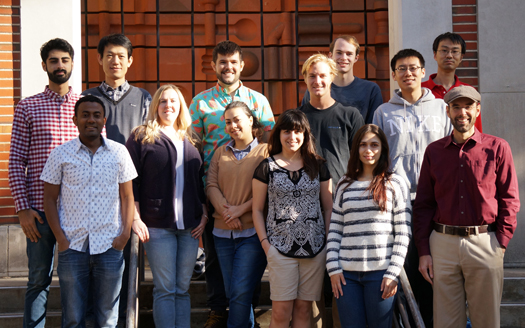



Research in our laboratory uses organic synthesis, physical organic chemistry, spectroscopic methods, and computation to design, prepare, and study novel organic molecules that show unique and useful behavior. In this context we are particularly interested in predicting and controlling properties that emerge when individual molecules aggregate, by weak noncovalent interactions, in solution. The phenomenon is called "self-assembly," and it is a process borrowed from nature to achieve complexity rapidly and reversibly (e.g., assembly of the DNA duplex or binding of a receptor to its enzymatic target). It is also the central theme of supramolecular chemistry, an established field that studies chemistry "beyond the molecule".
Current research interests include: a) exploiting Nature’s "information rich" molecular building blocks or strategies to design next-generation optoelectronic materials and devices (e.g., light-emitting diodes and photovoltaics), b) designing universal molecular scaffolds to aid the rapid and efficient synthesis of complex multifunctional systems (e.g., as therapeutics), c) developing new approaches to accessing functional organic materials through spontaneous self-assembly, d) leveraging the development of therapeutics through molecular design, synthesis, and physical organic studies.